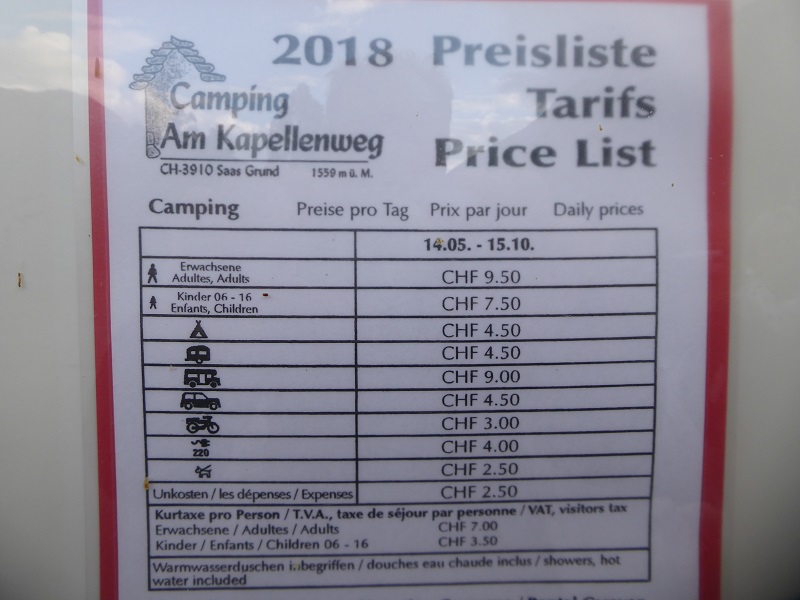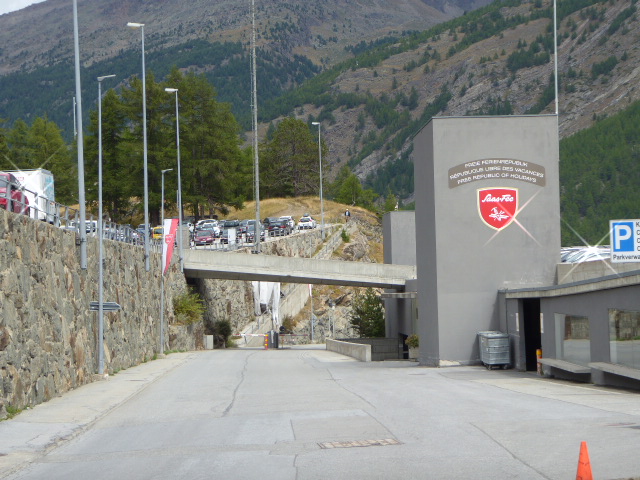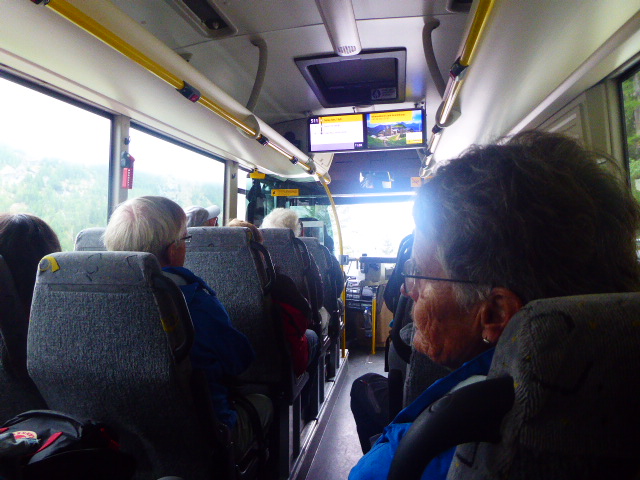
I have been staying in the Saas Tal, which I have found out now markets itself as the free republic of holidays, the last few days. On top of the basic campsite charge of 14 swiss francs (£11.20) a night I have also paid 7 swiss francs (£5.60) in tourist tax. That increases the basic charge by 50%. According to neo-liberal theory, where any taxes are bad, that should deter me or anyone else from visiting the valley.
In Scotland it is also sometimes argued that since accommodation providers, from luxury hotels to campsites, pay VAT they should not have to pay any bednight tax. This argument ignores the fact that its the visitor, not the business which pays, and also that VAT goes to the UK exchequer and is effectively removed from the local economy. Its interesting that the tourist tax in the Saas Tal is also described as VAT although for people like me staying in campsites at least its a far higher rate than VAT in the UK. Its also far higher than the bednight taxes you pay in the French National Parks. Again one might have thought this would put off visitors.
In the Saas Tal, however, they have turned the argument that tourist taxes deter visitors on its head. After the 2008 crash the Swiss Franc soared and foreign visitors deserted Switzerland in droves. To entice visitors back, the Saas Tal decided to make all public forms of transport within the valley, whether buses or ski lifts, free (there is still a charge for the hightest railway up onto the glacier). This is now marketed with various other deals as the free republic of holidays.

The tourism tax works because it provides a very good deal. Public transport in Switzerland normally costs a small fortune for foreign visitors but because buses are free for people staying here, they are packed and used rather than cars.

But what makes the tourist tax a particularly good deal is it provides free access to the whole ski lift network in the valley (with the exception of the Mittel Allalin railway). Instead of forking out £30 or so for a single lift you can go anywhere you want effectively for just £5.60 a day. The point here is that all the tourist tax you pay is being spent on the provision of visitor infrastructure which improves the experience.
Imagine paying £5.60 a night at Aviemore and for that getting free transport not just to Cairngorm Mountain or along Speyside but a free ride on the funicular. We cannot do that because our system of visitor infrastructure provision is so fragmented. Instead of a local commune which co-ordinates and provides infrastructure, key parts of visitor infrastructure such as Cairngorm Mountain have been outsourced, while our public authorities fail to co-operate (as with Argyll and Bute Council and the Loch Lomond and Trossachs National Park).
Now contrast the tourist tax in the Saas Tal with the access tax which Argyll and Bute Council is trying to impose at Luss, Arrochar and Duck Bay (see here) or the car parking charges which Natural Retreats are trying to impose at Cairngorm (see here). Contrast the £5.60 a day tourist tax in the Saas Tal, for which you get free lifts and buses, with the £9 a day charge for parking at Arrochar or the £8 a day charge at Cairngorm for campervans and vans – for which you get precisely nothing.
What the Saas Tal demonstrates is that there is clearly a difference between tourism taxes, where money is invested in the provision of visitor infrastructure, and access taxes which are simply a charge for being somewhere. Our National Parks should be opposing all charges for access – and thanks to Andrew who in a comment on my post on the access tax at Arrochar pointed out that parking charges without facilities are contrary to the Scottish Outdoor Access Code. At the same time our National Parks should be learning from how other countries use tourism taxes, whether in National Parks or not (the Saas Tal is nowhere near a National Park), to provide high class visitor infrastructure. (A week ago I was in Vallorcine and there for your tourist tax of approx £2 you get free use of the train up and down the Chamonix Valley).
Unfortunately at present the Scottish Government and our public authorities (the Loch Lomond and Trossachs National Park Authority and SNH both appear to have been silent on Argyll and Bute’s access tax) appear willing to turn a blind eye to access taxes while being resolutely opposed to any form of tourism tax. That needs to change.
It is not just the areas of National parks that would benefit from following the local tourist tax and some of the “supercard” deals that are actually paid for you as tourist by paying more to accomodation providers (no Airb’nb) in Austria and Switzerland. Imagine how much easier it would be to travel as a tourist at say the Edinburgh Festival if such taxes were levied here in Scotland.
The size of the council areas in which these local taxes and travel areas are based and set are much smaller than our unitary authorities and I do wonder if say one area were brave enough to bite the bullet and they saw an upswing in numbers but with better tourist services ie bogs and buses whether others would follow.